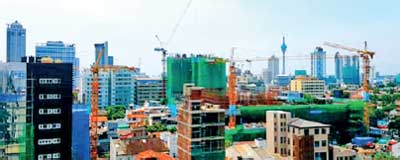Sunday Aug 24, 2025
Sunday Aug 24, 2025
Tuesday, 26 July 2016 00:05 - - {{hitsCtrl.values.hits}}
The existing urban population estimate in Sri Lanka fails to reflect the true level of urbanisation due to the inappropriate definition that has been adopted. A new Working Paper launched by the Institute of Policy Studies of Sri Lanka (IPS) develops an alternative definition for urban areas in the country, to reconcile the mismatch between actual and existing estimates. To this end, the study reviews definitions adopted in other countries and analyses perceptions of key informants.
Based on above and available data, the paper defines urban using characteristics such as minimum population, population density, firewood dependence, and well-water dependence. The findings of the study estimates that 43.8% of Sri Lanka’s population lives in urban areas. The author, IPS Research Fellow Dr. Bilesha Weeraratne points out that, “The important feature of the definition is its dynamic nature in contrast to the rigidities associated with the local government based administrative definition.” Sri Lanka is currently at the crossroads of a major structural transformation, moving from a predominantly rural to a predominantly urban population and it is important to clearly distinguish actual urban areas from actual rural areas. Dr. Weeraratne adds, “If targeting is based on an obsolete definition of urbanisation, areas with urban characteristics misclassified as rural would be allocated with insufficient funds and inappropriate development plans and once again lead to messy urbanisation.” The study makes an important contribution to Sri Lanka’s policy and legislative arena to revise the existing definition of urbanisation.
urban areas. The author, IPS Research Fellow Dr. Bilesha Weeraratne points out that, “The important feature of the definition is its dynamic nature in contrast to the rigidities associated with the local government based administrative definition.” Sri Lanka is currently at the crossroads of a major structural transformation, moving from a predominantly rural to a predominantly urban population and it is important to clearly distinguish actual urban areas from actual rural areas. Dr. Weeraratne adds, “If targeting is based on an obsolete definition of urbanisation, areas with urban characteristics misclassified as rural would be allocated with insufficient funds and inappropriate development plans and once again lead to messy urbanisation.” The study makes an important contribution to Sri Lanka’s policy and legislative arena to revise the existing definition of urbanisation.
For more details on this publication visit the IPS website http://www.ips.lk or email [email protected] call 0112143107.